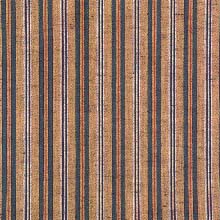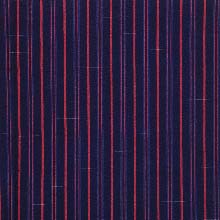Weave
1. Produced in Tateyama City, Chiba Prefecture.
2. Characteristics: A fabric woven with thin cotton threads dyed with plant dyes, having luster like silk as it is fulled; the designs are chic and fascinating.
3. Uses: Clothing, "Haori" coat, "Hakama".
4. History: Since it was imported from St. Thomas in India, it was first called "San Tome" but in later years called "Tozandome." Cotton fabrics woven with domestic cotton but looking exotic were loved much in Edo and its surrounding areas in the middle of the Edo Period(1600-1868). As they were loved by most people beyond the difference of classes and sexes, they were produced in many districts among which the one produced in Kawagoe(Saitama Prefecture) was popular.
A weaver, Mosuke Saito who studied the technique in Kawagoe moved toTateyama in 1890 and developed it and his descendents have been monopolizing its production till today.
Dyeing Method
The colors are indigo, light brown, grey, yellow, light blue, red, reddish brown, blackish red and the kinds of dyes are indigo "Yamamomo"(Myrica rubia), bark of "Shiinoki"(Castanopsis cuspidata), "Gobaishi"(Galla), "Yashabushi"(Corylus heterophylla). Only for the red color, a chemical dye is used. After dying, the threads are dried in the sun. Woven fabrics are dipped for half an hour in lukewarm water to remove its harshness. They are beaten with fulling block on a paper spread on stone and then steamed for a finish.




